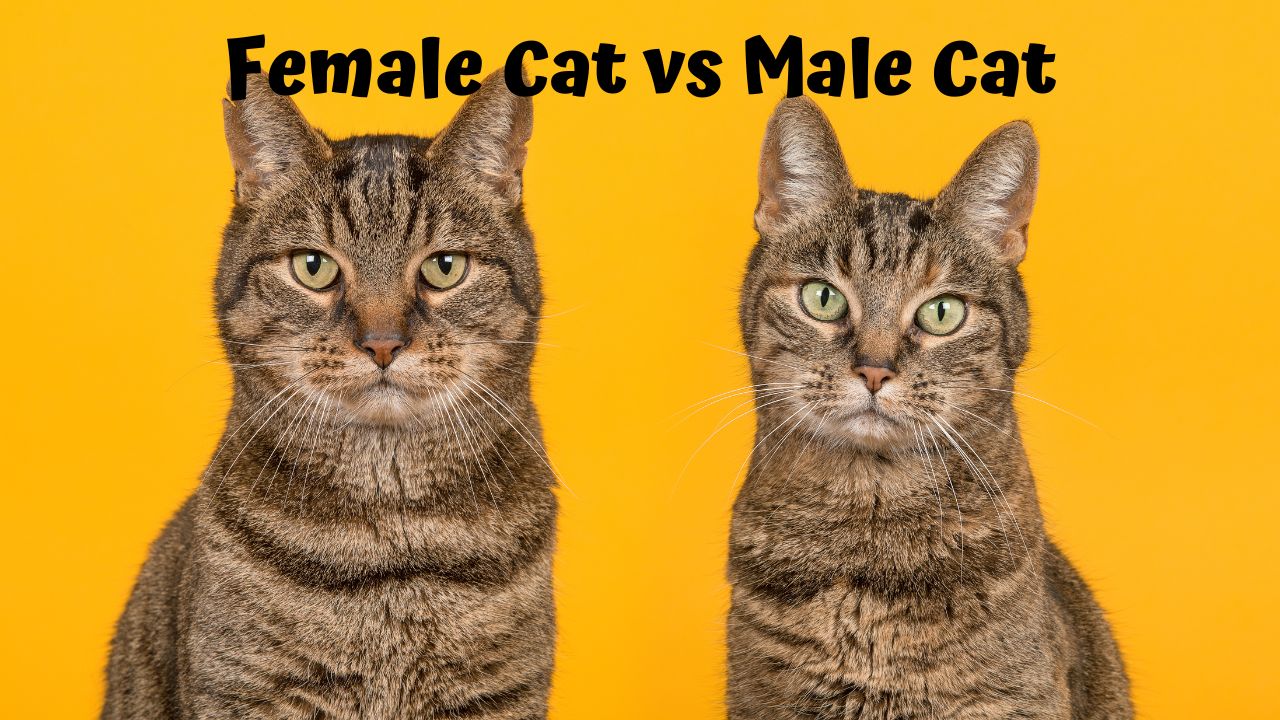In the intricate world of feline companionship, understanding the nuances between male and female cats can be both fascinating and crucial for prospective cat owners.
This comprehensive exploration delves into the behavioral and physiological differences that set apart female and male cats, providing insights into their unique traits and tendencies.
From physical characteristics to social interactions, and health considerations to personality quirks.
In this article Female Cat vs Male Cat we aim to shed light on the gender-specific aspects of feline behavior and biology, helping cat enthusiasts make informed decisions when choosing their furry friends.
Female Cat vs Male Cat: Understanding Cat Gender Differences
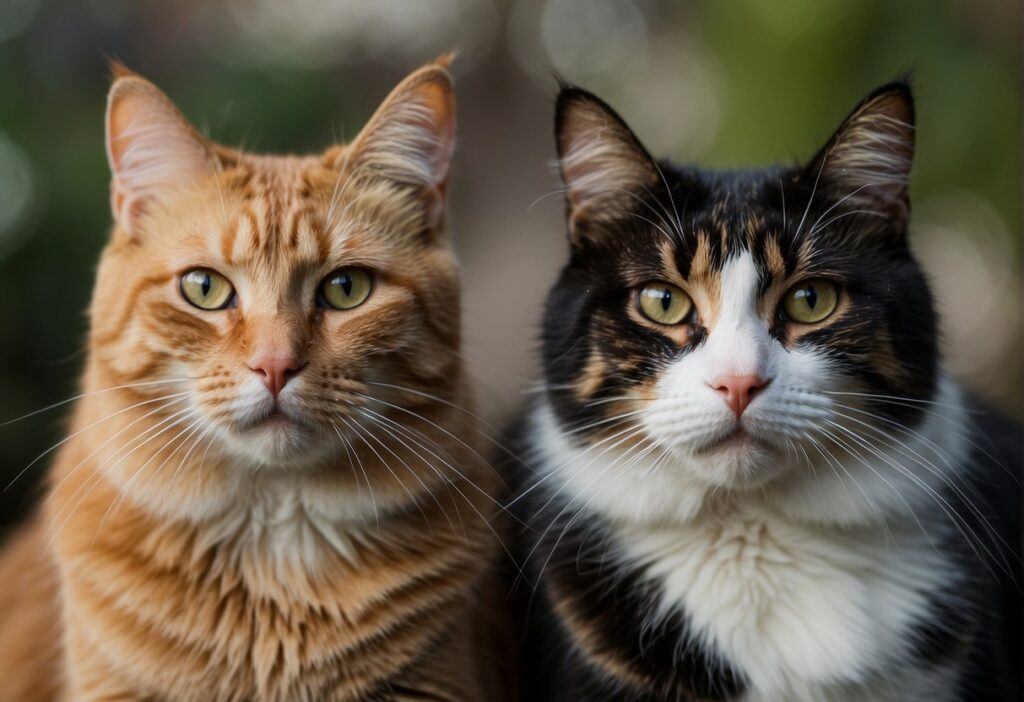
When selecting a new feline friend, understanding the biological and behavioral distinctions between male and female cats can be important factors to consider.
The sex of the cat often influences certain physical and behavioral traits, though individual personalities can vary widely.
Biological Differences:
- Reproductive organs: Unaltered male cats possess testes, while unspayed female cats have ovaries and a uterus.
- Secondary sexual characteristics: Male cats may develop broader heads and thicker necks, while females typically remain daintier in appearance.
Physical Differences:
- Size: Males are generally larger than their female counterparts.
- Marking: Unneutered male cats are more prone to spraying to mark their territory.
Behavioral Differences:
- Temperament: Male cats are often described as more friendly and outgoing, whereas females can be more reserved and independent.
- Aggression: Unneutered males might show more aggressive behavior due to hormones.
| Characteristic | Male Unneutered Cat | Female Unspayed Cat |
|---|---|---|
| Territorial Marking | Common | Less common |
| Roaming | More likely | Less likely |
| Aggression | Maybe more evident | Usually less |
Neutering and Spaying: The biggest difference in behavior might be mitigated by neutering or spaying.
These procedures can lead to reduced territorial aggression and roaming instincts in males, and eliminate heat cycles in females which can affect their behavior.
Choosing between a male or female cat depends on what traits are most compatible with your lifestyle and preferences.
A thorough understanding of each gender can lead to a more harmonious match between a cat and its owner.
Health and Physiology
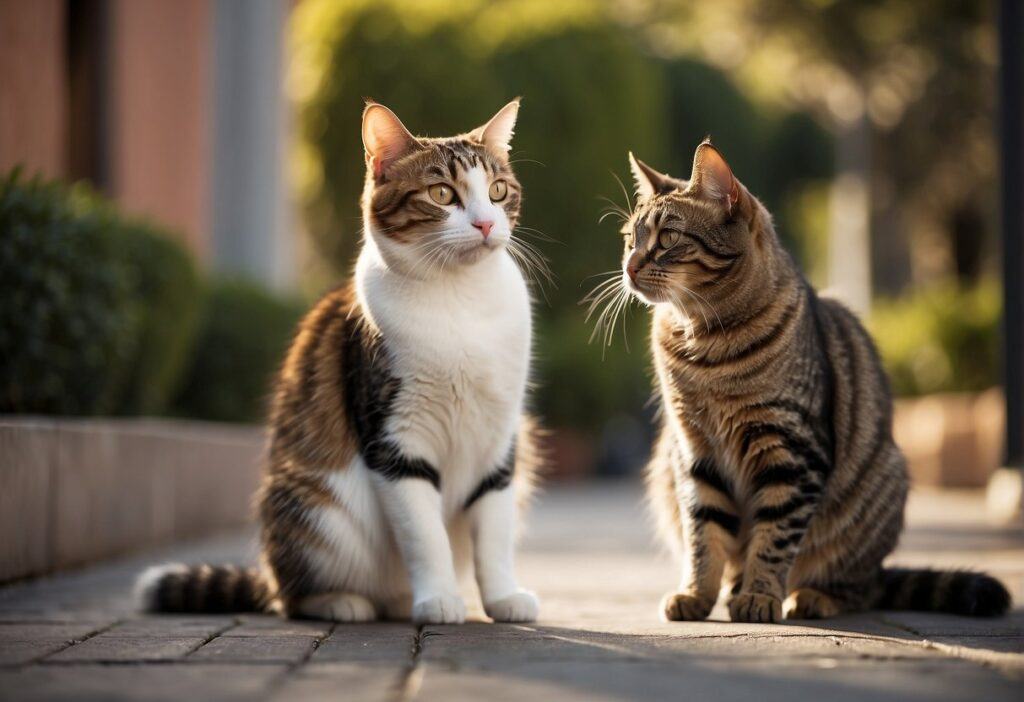
Understanding the distinct health and physiological differences between female and male cats is crucial for their care.
Specific issues relate to reproductive health, general health concerns, and physical attributes, often influenced by their sex.
Reproductive Health
Reproductive health is notably different between male and female cats. Female cats experience heat cycles, which can begin as early as four to six months of age.
These cycles can lead to increased vocalization and a change in behavior as they seek a mate. Female cats also run the risk of mammary tumors, particularly if they are not spayed.
Male cats reach sexual maturity around five to seven months of age and can exhibit territorial behaviors such as spraying.
Unneutered male cats are at risk of developing behavioral issues that can affect the dynamic within family members.
- Females:
- Heat cycles: Begins at 4-6 months
- Mammary tumors: Higher risk if not spayed
- Males:
- Sexual maturity: 5-7 months
- Behavioral issues: Possible in unneutered males
General Health Concerns
General health concerns in cats may not always be sex-specific, but there are certain conditions more prevalent in one gender.
Male cats, for instance, have a higher propensity for urinary tract infections and urinary obstructions, partly due to their narrower urethrae.
This often necessitates a special urinary diet to prevent future issues. Female cats, while less prone to urinary problems, can develop reproductive system infections if not spayed.
- Urinary tract infections: More common in males
- Urinary obstructions: Particularly in males; may require special diet
- Reproductive system infections: Possible in unspayed females
Physical Attributes
Physical attributes, such as coat color and body types, can sometimes be linked to the gender of the cat. For example, nearly all calico cats are female due to the genetic link between sex and coat color.
On the other hand, orange cats are more often male. When assessing body types, male cats typically have a larger, more muscular frame than females.
- Calico cats: Almost exclusively female
- Orange cats: Predominantly male
- Body types: Males are generally larger and more muscular
Social and Behavioral Insights
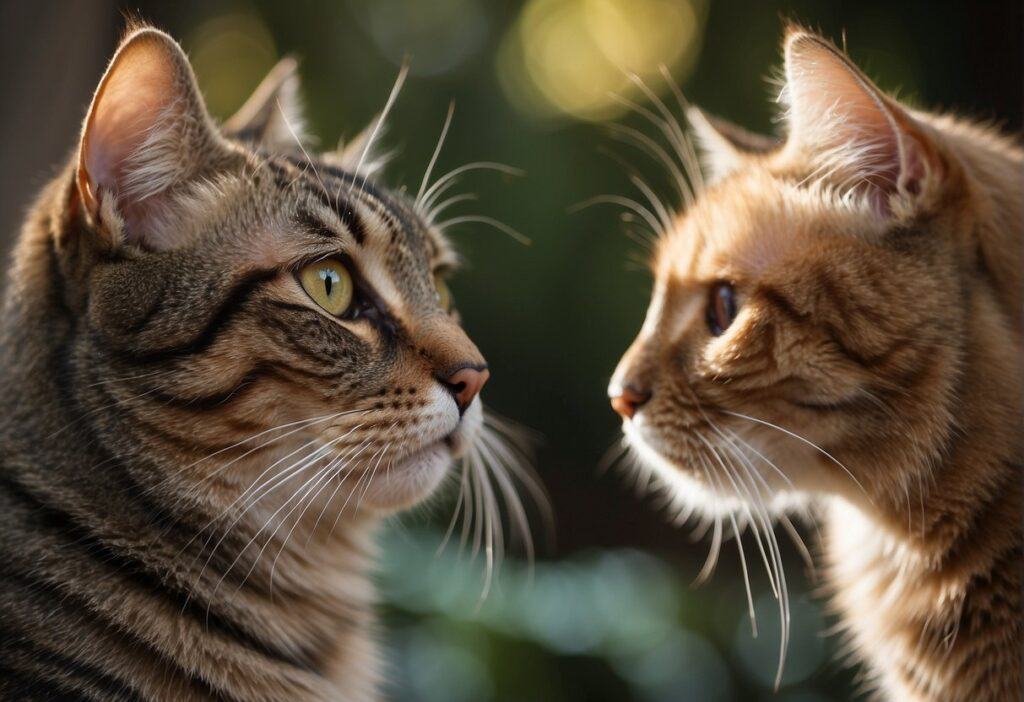
When exploring the social and behavioral distinctions between female and male cats, it’s pivotal to acknowledge that an individual cat’s personality is often a better indicator of behavior than gender.
However, certain tendencies are observed within the context of multi-cat households, personality facets, and problematic behaviors that may guide prospective owners in choosing the right cat for their home environment.
Social Dynamics in Multi-Cat Households
In multi-cat households, social dynamics vary, often reflecting personal traits of individual felines rather than gender-specific tendencies.
Strong bonds can develop between cats of either sex, especially if they have been raised together from a young age.
Nevertheless, territorial behavior is commonly seen and may manifest differently in males and females, with males exhibiting more urine marking.
Successful integration of a new cat into a household hinges on gradual and careful introductions, regardless of the cat’s sex.
- Male Cats: May exhibit more overt territorial behaviors; potentially more dominant.
- Female Cats: Often form close-knit groups, can be territorial but less overtly than males.
Personality and Temperament
Personality and temperament in domestic cats are complex traits influenced by a variety of factors including genetics, environment, and upbringing.
While certain cat breeds are known for specific traits (for instance, Siamese cats can be very vocal and sociable), an individual cat’s personality is a more reliable determinant of behavior than sex.
- Lap Cat Tendency: Not confined to one gender; more about the individual personality.
- Playfulness: Varies by individual; not strongly tied to being a male or female cat.
Problematic Behaviors
Problematic behaviors in cats, such as aggressive behavior and urine marking, can be influenced by factors like territoriality, stress, and lack of enrichment.
Indoor cats may display more behavioral issues due to restricted space and stimuli, which can lead to frustration and stress, potentially resulting in such behaviors.
- Male Cats: More prone to spraying, especially if not neutered.
- Female Cats: Can be aggressive, particularly when in heat if not spayed.
It should be noted that spaying and neutering often reduce many problematic behaviors in both male and female cats, highlighting the importance of considering these procedures when managing feline behavior.
Related: Are Cat Palms Toxic to Cats?
Choosing the Right Cat
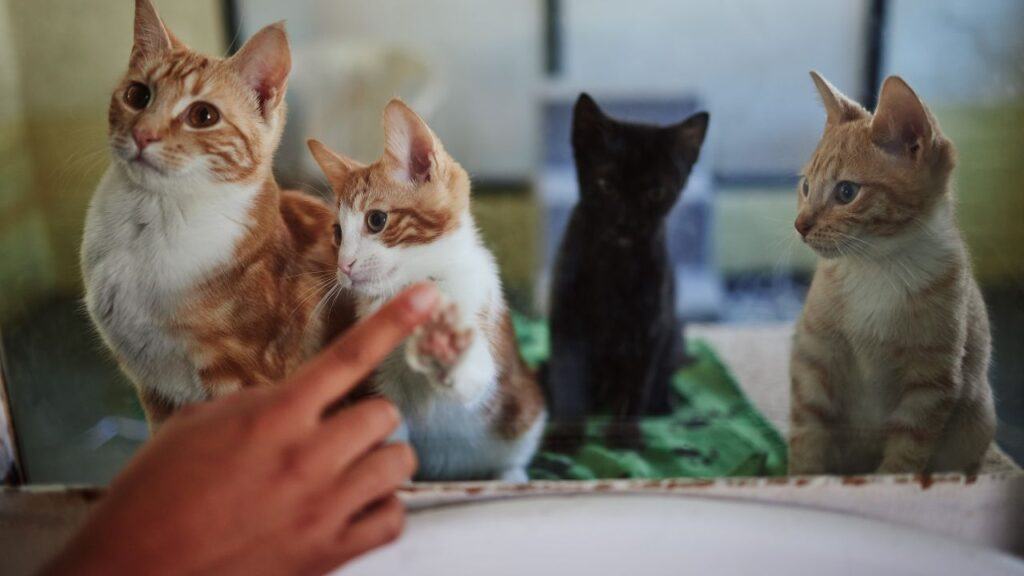
When selecting a new pet, potential cat owners should consider the sex and coat color of the cat, as they can significantly impact the cat ownership experience.
Considerations for Potential Cat Owners
Before adding a young kitten or adult cat to one’s life, it is important to ponder over certain factors. Sex of your cat plays a crucial role, with male cats often being larger and more territorial, whereas female cats might be more independent and, at times, seek a mate, which can lead to additional responsibilities for the owner during breeding seasons.
- Compatibility with current cat(s): If there’s already a cat in the home, one should consider how the new cat might affect the dynamics. Generally, opposite sex cats tend to get along better, though personalities vary greatly.
- Prospective demeanor: Male cats are perceived by some as more affectionate, while females may be regarded as more aloof. This is a general term and individual cat personalities differ widely.
- Owner’s lifestyle: An owner’s daily routine should align with the cat’s needs for attention and stimulation.
Table 1: Cat Sex Characteristics
| Sex | Size | Temperament | Considerations |
|---|---|---|---|
| Male | Generally larger | Territorial, social | May spray to mark territory |
| Female | Often smaller | Independent | May go into heat regularly |
Influence of Coat Color and Type
Coat color and type are often overlooked yet important decision points. Not only can the color of your cat make a statement, but the type of coat can also dictate the amount of grooming required.
- Allergies and cleaning: A cat with excess fur will require more grooming to prevent matting and reduce the spread of fur around the house. This can be an important consideration if anyone in the household suffers from allergies.
- Distinct differences: While there are social myths about the temperament of certain colored cats, color is not a predictor of personality. Each cat is unique, and color should be considered more for the owner’s aesthetic preference.
It’s essential for potential new cat owners to weigh these attributes alongside the commitment and responsibilities of owning a cat.
Recent Findings and Expert Opinions
Recent studies and veterinary insights have provided a deeper understanding of behavioral and physiological differences between male and female cats. These insights are helping pet parents make informed decisions.
University Studies and Veterinary Insights
Researchers at the University of California, Davis Veterinary Medical Teaching Hospital have conducted a recent study examining behavioral trends between female kittens and cat males.
Findings suggest that unneutered males may exhibit more territorial behaviors compared to their neutered counterparts.
However, the study indicates that life experiences and the individual cat’s personality can play a small role in behavioral tendencies, suggesting that anecdotal evidence should not be the sole basis for understanding the behaviors of cat’s gender.
Veterinarians have often noted that intact males, or un-neutered tomcats, have a propensity for marking territory and more aggressive behaviors, potentially leading to a negative experience for pet parents.
On the other hand, medical examinations show that female kittens have smaller urethras, which can lead to differences in susceptibility to certain urinary tract issues.
Adoption centers are taking a closer look at these findings to guide potential adopters in the decision-making process.
Scientific evidence is emphasized over anecdotal evidence when counseling pet parents about the pros and cons of adopting a female cat versus a male cat.
Introducing Cory Haasnoot, a devoted father, loving husband, and enthusiastic cat lover. As a key content creator for CatFurLife.com, Cory blends his family values and passion for felines into engaging and informative content. He brings a unique perspective to the site, sharing cat care tips and how cats can enrich family life and bring joy to households.

